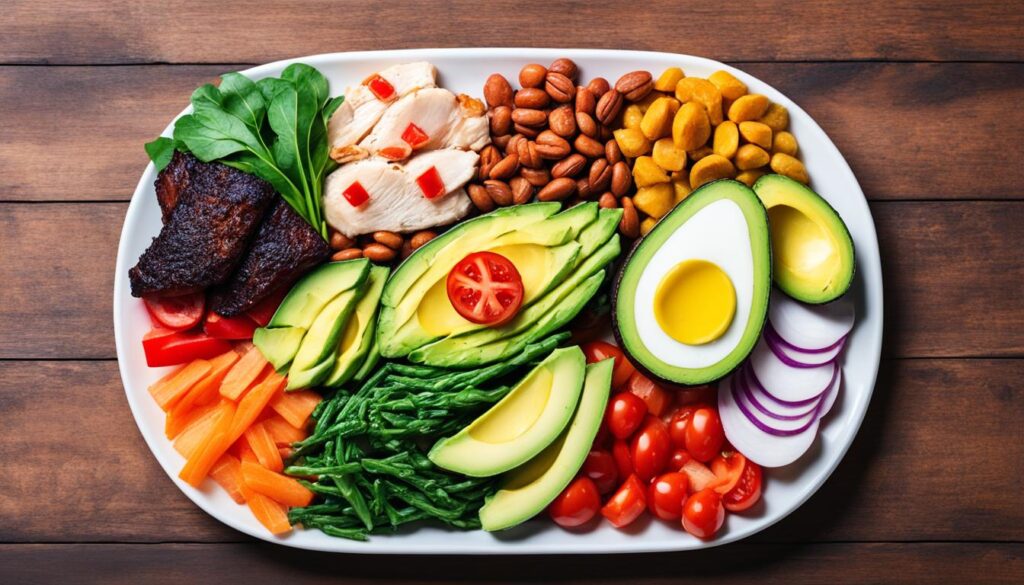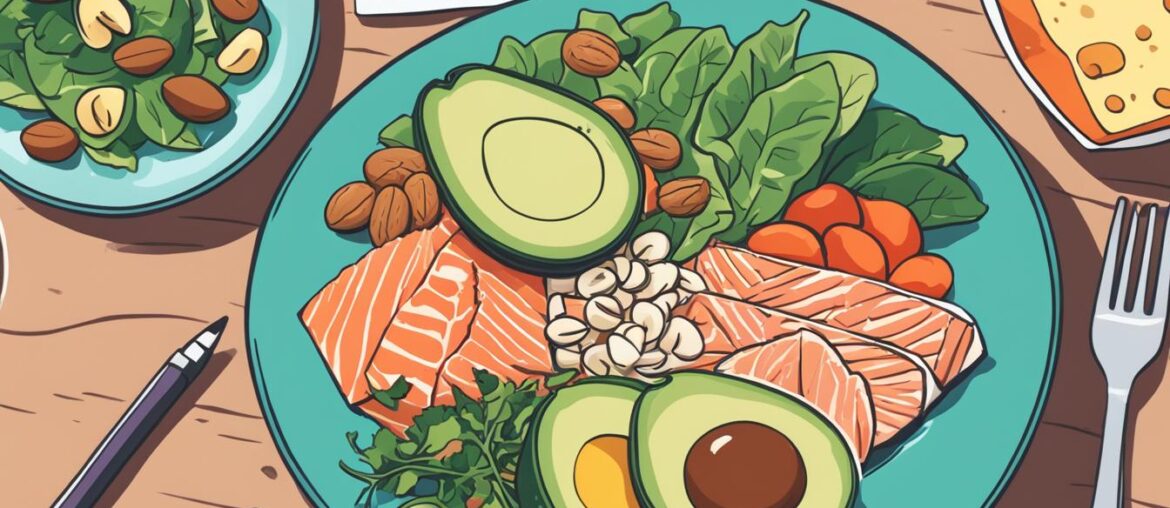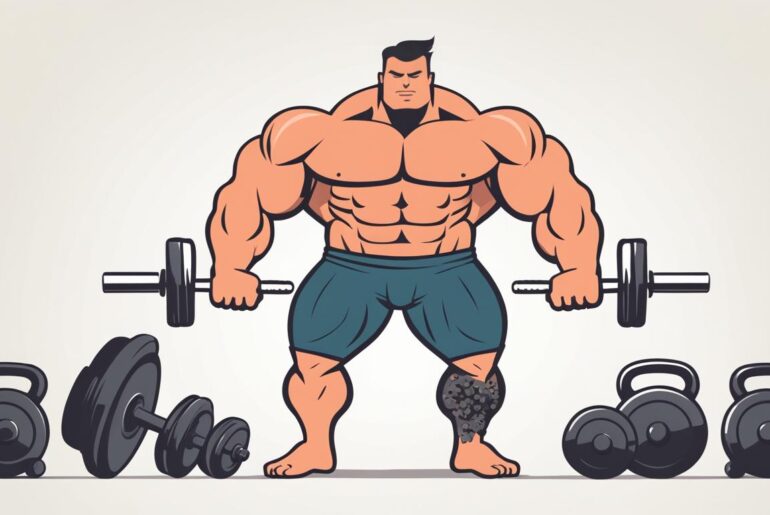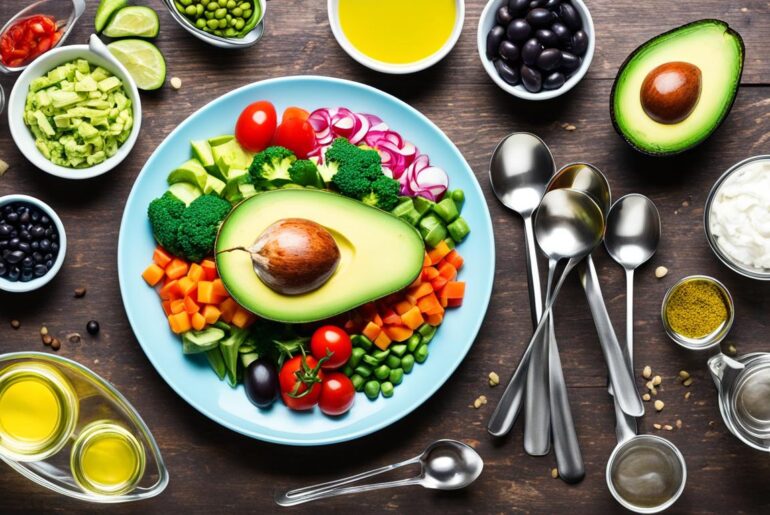I’m here to share with you a powerful tool for weight loss – the Ketogenic Diet. This high-fat, low-carb diet has gained popularity for its ability to promote healthy and effective weight loss without the need for gym workouts. If you’re looking for a way to shed those extra pounds and achieve your weight loss goals, the ketogenic diet might be the answer you’ve been searching for.
Ketogenic Diet Basics
The ketogenic diet is a popular approach to weight loss that focuses on a low carb, high-fat eating plan. By significantly decreasing carbohydrate intake, the body enters a state of ketosis, where it becomes efficient at burning fat for fuel instead of glucose. This metabolic state allows for consistent weight loss and improved energy levels.
To follow a ketogenic diet, it is important to understand the basics. The standard breakdown for this diet is approximately 5-10% carbohydrates, 70-75% fats, and 15-20% protein. By drastically reducing carb intake, the body is forced to rely on fat as its primary energy source.
Entering ketosis is a key component of the ketogenic diet. When the body is in ketosis, it produces ketones. Ketones are small molecules that serve as an alternative fuel source, providing energy to the brain and other organs. This process has been shown to have numerous health benefits, including weight loss, improved mental clarity, and increased satiety.
Consuming healthy fats and proteins is essential on a ketogenic diet. Healthy fat sources include avocados, olive oil, nuts, seeds, and fatty fish like salmon. Protein sources can include meat, poultry, and eggs. It’s important to choose high-quality, nutrient-dense foods to fuel the body properly.
Monitoring carbohydrate intake is crucial for maintaining ketosis. It’s important to limit or eliminate foods that are high in carbs, such as grains, sugar, and processed foods. Instead, focus on nutrient-rich, low carb vegetables like broccoli, spinach, and kale. These veggies provide essential vitamins and minerals without compromising ketosis.
Embracing the ketogenic diet can lead to significant weight loss results and improved overall health. By understanding the basics, monitoring macronutrient intake, and consuming high-quality fats and proteins, individuals can successfully achieve their weight loss goals through this low carb, high-fat approach.
Benefits of the Ketogenic Diet
The ketogenic diet offers several benefits, including:
- Weight loss: By forcing the body to burn fat for fuel, the ketogenic diet helps individuals shed excess weight.
- Improved mental clarity: Many people report enhanced focus and mental sharpness while following a ketogenic eating plan.
- Increased energy: Ketones provide a stable energy source, resulting in sustained energy levels throughout the day.
- Reduced hunger: The high-fat content of the diet helps curb cravings and keeps individuals feeling satisfied.
- Lowered inflammation: The ketogenic diet has anti-inflammatory properties, contributing to improved overall health.
Challenges of the Ketogenic Diet
While the ketogenic diet offers numerous benefits, it is important to be aware of potential challenges:
- Carb restriction: Adapting to a low carb lifestyle can be challenging, particularly for individuals accustomed to consuming high amounts of carbs.
- Keto flu: Some individuals experience flu-like symptoms, known as the “keto flu,” during the initial phase of transitioning into ketosis. These symptoms typically subside within a week or two.
- Monitoring ketosis: Regularly testing blood ketone levels or using urine strips to confirm ketosis can be an additional task for individuals on a ketogenic diet.
- Increased fat consumption: The high-fat nature of the diet may be a significant shift for individuals accustomed to low-fat eating plans.
With proper planning, education, and support, the ketogenic diet can be a highly effective approach to weight loss and overall health improvement. Always consult with a healthcare professional before making any significant dietary changes, particularly if you have any underlying health conditions or concerns.
Ketogenic Diet Meal Plan
Following a ketogenic diet involves careful meal planning to ensure that your meals and snacks are low in carbs and high in healthy fats. A well-designed meal plan can help you stay on track and achieve your weight loss goals while enjoying delicious and satisfying foods.
When creating a ketogenic diet meal plan, it’s important to choose keto-friendly foods that are low in carbohydrates and high in healthy fats. These foods will help you maintain ketosis, a state where your body uses fat as its primary source of energy.
Key Components of a Ketogenic Meal Plan
A well-balanced ketogenic meal plan should include the following key components:
- Protein: Choose high-quality sources of protein such as eggs, poultry, fatty fish (like salmon and tuna), and meat. These foods not only provide essential nutrients but also help keep you feeling full and satisfied.
- Fats: Include healthy high-fat foods in your diet, such as avocados, nuts and seeds (like almonds and chia seeds), full-fat dairy products (like cheese and yogurt), and oils rich in beneficial fats (such as olive oil and coconut oil).
- Low Carb Vegetables: Incorporate non-starchy vegetables into your meals, such as leafy greens, broccoli, cauliflower, zucchini, and bell peppers. These vegetables are low in carbs and high in fiber, making them an excellent choice for a ketogenic diet.
- Condiments: Choose keto-friendly condiments and sauces that are low in carbs and sugar. Some examples include unsweetened mustard, mayonnaise, hot sauce, and vinegar.
By including these components in your meal plan, you can ensure that you’re getting all the necessary nutrients while staying within the appropriate range of macronutrients for ketosis.
Avoiding High Carb Foods
In order to maintain ketosis, it’s important to avoid or limit foods that are high in carbohydrates. These include:
- Bread and other baked goods
- Sweets such as cookies, candies, and ice cream
- Pasta, rice, and grains
- Starchy vegetables like potatoes and corn
- Legumes and beans
- Fruits (except for small portions of berries)
- High-carb sauces and dressings
- Certain alcoholic beverages
By avoiding or minimizing these high-carb foods, you can keep your carbohydrate intake low and maintain a state of ketosis.

Example Ketogenic Diet Meal Plan
Here’s an example of a one-day meal plan that incorporates keto-friendly foods and keeps carbs to a minimum:
| Meal | Food |
|---|---|
| Breakfast | Scrambled eggs with spinach and avocado |
| Lunch | Grilled chicken salad with mixed greens, cherry tomatoes, cucumbers, and olive oil dressing |
| Snack | Almonds and celery sticks with almond butter |
| Dinner | Baked salmon with roasted asparagus and a side of cauliflower rice |
| Snack | Keto-friendly smoothie made with unsweetened almond milk, spinach, avocado, and protein powder |
Remember, this is just a sample meal plan, and you can customize it based on your preferences and nutritional needs. It’s important to consult with a healthcare professional or registered dietitian before starting any new diet to ensure it’s safe and suitable for your individual needs.
By following a well-designed ketogenic diet meal plan and making smart food choices, you can successfully achieve your weight loss goals and enjoy the benefits of a low carb, high-fat lifestyle.
Ketogenic Snack Options
Snacking between meals can help manage hunger and keep you on track while following a ketogenic diet. Here are some excellent keto-friendly snack options:
1. Almonds and Cheddar Cheese
A handful of almonds paired with a serving of cheddar cheese provides a satisfying crunch and a good balance of healthy fats and protein.
2. Avocado Stuffed with Chicken Salad
Take a ripe avocado, cut it in half, and remove the pit. Fill the hollowed-out avocado halves with a delicious chicken salad mixture made with mayo, diced chicken, celery, and seasonings.
3. Guacamole with Low Carb Veggies
Enjoy a bowl of homemade guacamole made with mashed avocado, lime juice, red onion, cilantro, and diced tomatoes. Pair it with low carb veggies like cucumber slices or bell pepper strips for a refreshing and nutritious snack.
4. Trail Mix with Unsweetened Coconut, Nuts, and Seeds
Mix together unsweetened coconut flakes, your favorite nuts (such as almonds, walnuts, or pecans), and seeds (like pumpkin or sunflower seeds) for a convenient and satisfying snack on the go.
5. Hard-Boiled Eggs
Hard-boiled eggs are a protein-packed snack that can keep you feeling full and satisfied. Sprinkle them with salt and pepper or enjoy them with a side of your favorite low-carb dip.
6. Kale Chips
Bake kale leaves in the oven with a drizzle of olive oil and your choice of seasonings until crispy. These homemade kale chips are a flavorful and low-carb alternative to traditional potato chips.
7. Olives and Sliced Salami
Indulge in some salty olives paired with thinly sliced salami for a savory and satisfying snack. Look for olives that are marinated in oil rather than brine for an extra dose of healthy fats.
8. Celery and Peppers with Herbed Cream Cheese Dip
Slice celery stalks and bell peppers into sticks and serve them with a creamy and flavorful herbed cream cheese dip. This combination provides a refreshing crunch with a burst of flavor.
9. Berries with Heavy Whipping Cream
Enjoy a bowl of mixed berries, such as strawberries, blueberries, and raspberries, topped with a dollop of rich heavy whipping cream. It’s a sweet and satisfying treat that’s low in carbs.
10. Jerky
Choose jerky made from lean meats, like beef or turkey, that are low in sugar and carbs. Jerky is a portable and protein-packed snack that can keep you energized throughout the day.
11. Cheese Roll-Ups
Wrap slices of your favorite cheese around deli meat or low-carb tortillas for a quick and easy snack. This combination of protein and fats is both tasty and satiating.
12. Parmesan Crisps
Bake grated Parmesan cheese until it forms crispy chips. These cheesy and crunchy crisps are a delicious snack option that’s virtually carb-free.
13. Macadamia Nuts
Macadamia nuts are one of the highest-fat nuts, making them an ideal keto-friendly snack. Enjoy them on their own or add them to your favorite trail mix for an extra boost of healthy fats.
14. Greens with High-Fat Dressing and Avocado
Create a refreshing salad using a variety of greens, such as spinach, arugula, and romaine lettuce. Top it with a high-fat dressing, such as ranch or Caesar, and add sliced avocado for extra creaminess.
| Ketogenic Snack Options | Description |
|---|---|
| Almonds and Cheddar Cheese | A satisfying combination of crunchy almonds and rich cheddar cheese. |
| Avocado Stuffed with Chicken Salad | Ripe avocados filled with a delicious chicken salad mixture. |
| Guacamole with Low Carb Veggies | Homemade guacamole served with low carb vegetables for dipping. |
| Trail Mix with Unsweetened Coconut, Nuts, and Seeds | A convenient and nutritious mix of coconut, nuts, and seeds. |
| Hard-Boiled Eggs | Protein-packed eggs that keep you feeling full and satisfied. |
| Kale Chips | Homemade crispy chips made from baked kale leaves. |
| Olives and Sliced Salami | Salty olives paired with thinly sliced salami for a savory snack. |
| Celery and Peppers with Herbed Cream Cheese Dip | Crunchy celery and peppers served with a flavorful cream cheese dip. |
| Berries with Heavy Whipping Cream | Mixed berries topped with rich heavy whipping cream for a sweet treat. |
| Jerky | Protein-packed and portable jerky made from lean meats. |
| Cheese Roll-Ups | Slices of cheese wrapped around deli meat or low-carb tortillas. |
| Parmesan Crisps | Crispy chips made from baked grated Parmesan cheese. |
| Macadamia Nuts | High-fat nuts that provide a satisfying crunch. |
| Greens with High-Fat Dressing and Avocado | A refreshing salad topped with high-fat dressing and creamy avocado. |
Conclusion
The ketogenic diet can be a highly effective method for achieving weight loss without the need for exercise. By focusing on consuming high-fat, low-carb foods, the body enters a metabolic state known as ketosis, where it utilizes stored fat as its primary source of energy. This shift in fuel utilization can lead to significant and sustainable weight loss, as well as reduced feelings of hunger.
To attain optimal results, it is crucial to follow a well-rounded meal plan that includes whole, unprocessed foods and ample portions of low-carb vegetables. These nutrient-dense foods provide essential vitamins, minerals, and antioxidants while keeping carbohydrate intake to a minimum. Additionally, incorporating keto-friendly snacks into your routine can help manage hunger between meals, promoting healthy and natural weight loss.
It is important to consult with a healthcare professional before embarking on any new diet, particularly if you have underlying health conditions or concerns. They can provide personalized guidance and ensure that the ketogenic diet aligns with your specific needs. By adhering to the principles of the ketogenic diet and receiving appropriate medical supervision, you can achieve sustainable and natural weight loss, enhancing both your overall health and well-being.
FAQ
What is the ketogenic diet?
The ketogenic diet is a high-fat, low-carb diet that can help with weight loss. It involves reducing carbohydrate intake and increasing fat intake to induce a state of ketosis, where the body burns fat for energy.
How does the ketogenic diet promote weight loss?
By restricting carbs and increasing fat consumption, the ketogenic diet helps the body enter a state of ketosis. In this state, the body utilizes stored fat as its primary source of fuel, leading to weight loss.
Can I lose weight on a ketogenic diet without exercise?
Yes, the ketogenic diet can lead to weight loss even without exercise. By focusing on reducing carbs and increasing fat intake, your body will naturally burn fat for energy, resulting in weight loss.
What foods should I include in a ketogenic meal plan?
A ketogenic meal plan should include high-fat foods, moderate protein, and very low carbs. Examples of keto-friendly foods include eggs, poultry, fatty fish, meat, full-fat dairy, nuts and seeds, oils rich in healthy fats, avocados, and non-starchy vegetables.
Are there any snacks that I can have while on a ketogenic diet?
Yes, there are plenty of keto-friendly snack options. Some examples include almonds and cheddar cheese, avocado stuffed with chicken salad, guacamole with low-carb veggies, and trail mix made with unsweetened coconut, nuts, and seeds.
Can the ketogenic diet lead to sustainable weight loss?
Yes, the ketogenic diet can lead to sustainable weight loss if followed properly. By focusing on consuming whole, unprocessed foods and maintaining a consistent ketosis state, you can achieve natural and healthy weight loss.




